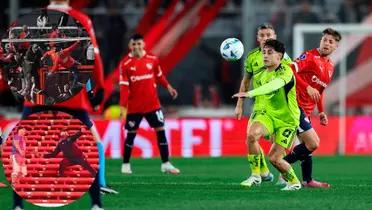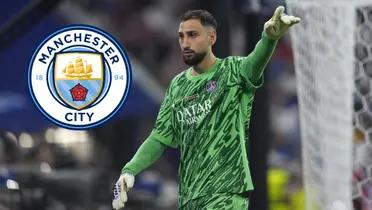Football World in Shock: Rodrigo Bentancur Diagnosed with Serious Condition Following On-Field Collapse (VIDEO)
The Uruguayan midfielder fell to the turf in the middle of the Carabao Cup match between Liverpool and Tottenham

The Uruguayan midfielder fell to the turf in the middle of the Carabao Cup match between Liverpool and Tottenham. After just 15 minutes, Rodrigo Bantancur collapsed without any other player making contact with him, so he had to leave on a stretcher and a respirator. Although there is no official information at this time, different reports suggest that it could be a stroke.
Football's Dark Side: When Players Collapse on the Pitch
The beautiful game of football, filled with passion, skill, and athleticism, has its darker side. Over the years, fans and players alike have been shocked by instances where footballers have collapsed on the pitch due to various medical conditions. These heart-wrenching events have highlighted the importance of player health and safety, and have prompted discussions about the physical demands of professional football.
Cardiac Events
One of the most common reasons for footballers to collapse on the pitch is a cardiac event. Conditions such as hypertrophic cardiomyopathy, a thickening of the heart muscle, and arrhythmias, irregular heartbeats, can lead to sudden cardiac arrest. These conditions can often be asymptomatic and may only become apparent during periods of intense physical exertion. Tragic incidents involving young players have brought this issue to the forefront of the sports world, prompting calls for mandatory heart screenings for athletes.
Heatstroke and Dehydration
Extreme weather conditions can also pose significant health risks to footballers. Heatstroke, caused by excessive heat exposure, can lead to a rapid increase in body temperature, confusion, and even death. Dehydration, which occurs when the body loses more fluid than it takes in, can also lead to serious health complications. These conditions are particularly prevalent in regions with hot climates and can be exacerbated by intense training sessions and matches.
Head Injuries
Head injuries are another major concern in football. Collisions between players can result in concussions, which can have both short-term and long-term consequences. Concussions can cause a range of symptoms, including headaches, dizziness, and memory loss. In severe cases, head injuries can lead to brain damage. The NFL has taken significant steps to address the issue of head injuries, and other leagues are following suit.
Musculoskeletal Injuries
Musculoskeletal injuries, such as muscle strains, ligament tears, and fractures, are a common occurrence in football. While these injuries are typically less serious than cardiac events or head injuries, they can still sideline players for extended periods of time and may have long-term consequences.
Preventing Tragedy
To reduce the risk of on-field medical emergencies, several measures have been implemented. These include:
- Pre-participation physical examinations: These exams help to identify underlying medical conditions that may put athletes at risk.
- Emergency action plans: Every sports facility should have a well-developed emergency action plan in place in case of a medical emergency.
- Early recognition and response: Training staff in cardiopulmonary resuscitation (CPR) and the use of automated external defibrillators (AEDs) is crucial for saving lives.
- Hydration and heat management: Implementing hydration protocols and providing adequate rest breaks can help to prevent heat-related illnesses.
Conclusion
The health and safety of athletes should always be a top priority. By taking proactive measures to prevent medical emergencies and by providing prompt and effective medical care, we can help to ensure that the beautiful game remains safe for all involved.
More news

THE GANG IS HERE! First Argentine Stars Arrive in Buenos Aires for Final Qualifier Push!
01/09/2025

THE LAST DANCE! Lionel Messi Confirms His Final World Cup Qualifier in Argentina!
29/08/2025

TRANSFER COLLAPSES! Julio Enciso Fails Medical Exams, Returns to Brighton!
27/08/2025

Vini doesn't feel entirely comfortable at Real Madrid anymore and is seeking a future at another club
26/08/2025

HERE WE GO! Piero Hincapié Says YES to Arsenal, Club Prepares Final Bid for Leverkusen Star!
26/08/2025

THE REAL MADRID SHOWDOWN: Nico Paz's Future Sparks a Bidding War Across Europe!
25/08/2025

SOUTH AMERICAN SHAME: Independiente vs. U. de Chile Match Canceled After Horrific Incidents!
21/08/2025

Rodrygo Benched by Xabi Alonso: The End of an Era at Real Madrid?
20/08/2025

PARIS IN PARIS! The New Superclub, Paris FC, Rises to Threaten PSG-Marseille Rivalry!
20/08/2025

PSG’s €850M Budget is 30x Larger Than the Smallest in Ligue 1!
19/08/2025

THE DEBUTS ARE HERE! Estupiñán & Modrić Step Onto the San Siro Stage!
18/08/2025

CONTROVERSY IGNITES! Barcelona Opens Season with a Contested 2-0 Victory Over Mallorca!
18/08/2025

SCANDAL ESCALATES: Donnarumma's Harsh Letter Responds to Luis Enrique's Super Cup Snub!
15/08/2025

Franco Mastantuono: A New Number 30 for Real Madrid with a Nod to the Past
14/08/2025

HISTORY MADE! PSG Wins First-Ever Super Cup Title in Thrilling Penalty Shootout!
14/08/2025

Mastantuono Arrives at Valdebebas for Real Madrid Presentation
13/08/2025

ON AND OFF THE PITCH: Is Nicki Nicole the New WAG of Barcelona's Lamine Yamal?
13/08/2025

Donnarumma Bids Farewell to Paris Saint-Germain at the Peak of His Career
13/08/2025



